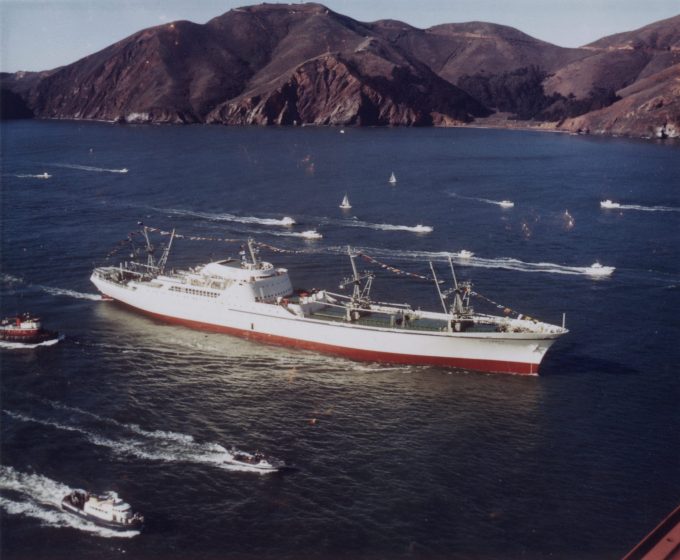NOCC adds third ‘ammonia-ready’ PCTC newbuild orderbook
Norwegian Car Carriers (NOCC) has added a third ‘ammonia-ready’ 7,000ceu LNG-powered ship to its two-vessel, ...
TFII: SOLID AS USUALMAERSK: WEAKENINGF: FALLING OFF A CLIFFAAPL: 'BOTTLENECK IN MAINLAND CHINA'AAPL: CHINA TRENDSDHL: GROWTH CAPEXR: ANOTHER SOLID DELIVERYMFT: HERE COMES THE FALLDSV: LOOK AT SCHENKER PERFORMANCEUPS: A WAVE OF DOWNGRADES DSV: BARGAIN BINKNX: EARNINGS OUTODFL: RISING AND FALLING AND THEN RISING
TFII: SOLID AS USUALMAERSK: WEAKENINGF: FALLING OFF A CLIFFAAPL: 'BOTTLENECK IN MAINLAND CHINA'AAPL: CHINA TRENDSDHL: GROWTH CAPEXR: ANOTHER SOLID DELIVERYMFT: HERE COMES THE FALLDSV: LOOK AT SCHENKER PERFORMANCEUPS: A WAVE OF DOWNGRADES DSV: BARGAIN BINKNX: EARNINGS OUTODFL: RISING AND FALLING AND THEN RISING

Nuclear reactor-powered merchant ships could severely disrupt the box liner industry, according to a study commissioned by ABS.
The US classification society said the industry “cannot afford to ignore” the findings of the Herbert Engineering Corp (HEC) study, which shows that a 14,000 teu box ship, powered by two lead-cooled 30MW reactors, would have more capacity (or less ship per teu), and better operational speeds than conventional designs.
The first such vessel to be built could be extremely disruptive to the liner industry. it says. Slow-steaming would not benefit a nuclear-powered vessel, and its reactor’s enormous power means the ship could, with suitable propulsion, cross the ocean at high speed.
To put this into perspective, the 1950s-built NS Savannah – the first nuclear-powered civilian ship – could reach speeds of 24 knots, or 44 kph. And for naval ships, speeds in excess of 30 knots (56kph), more than double that of a slow-steaming liner vessel, are commonplace.
A container vessel capable of more-than doubling the amount of work normally done by a ship of its size would likely gain massive market share very quickly, and have a drastic effect on market dynamics. Nuclear vessels do not need to be refuelled for decadesand could operate near-continuously for its whole lifespan.
One Xeneta analyst was uncomfortable with speculating the extent to which the arrival of such a vessel would shake things up, saying that it was “too far in the future”. But ABS CEO Christopher Wiernicki said nuclear power would have to be taken seriously, from a decarbonisation point of view.
“A net-zero world is more easily realised through nuclear propulsion, and we are putting in place the foundations for that future today. Turning this into a practical reality will require significant public sector support, and ABS is well-placed to bring governments and industry together.”
The US is most likely to be the first to build such a ship, hence the consideration by ABS.
Nuclear reactors have a well-established maritime pedigree, thanks to their use in naval vessels, and most US shipyards already double as merchant and naval yards. Meanwhile, Jones-Act vessels are already crewed by well-paid and experienced seafarers, meaning their owners have to become experts at making the economics work – and there is no shortage of nuclear-trained US Navy veterans ready to join the private sector.
But there is a cost trade-off: nuclear reactors are extremely expensive, and the benefit of zero bunkering would likely be offset by reactor inspection and maintenance costs, as well as the requirement to have at least one highly skilled nuclear technician on board.
In 2018, Russian icebreaker Sevmorput was used to transport frozen fish along the Northern Sea Route. But though the voyage was completed twice as fast as would be possible on the Trans-Siberian Railway, the service ended after operating costs were found to be prohibitive. And NS Savannah illustrated other challenges, including safety concerns in ports.
Comment on this article